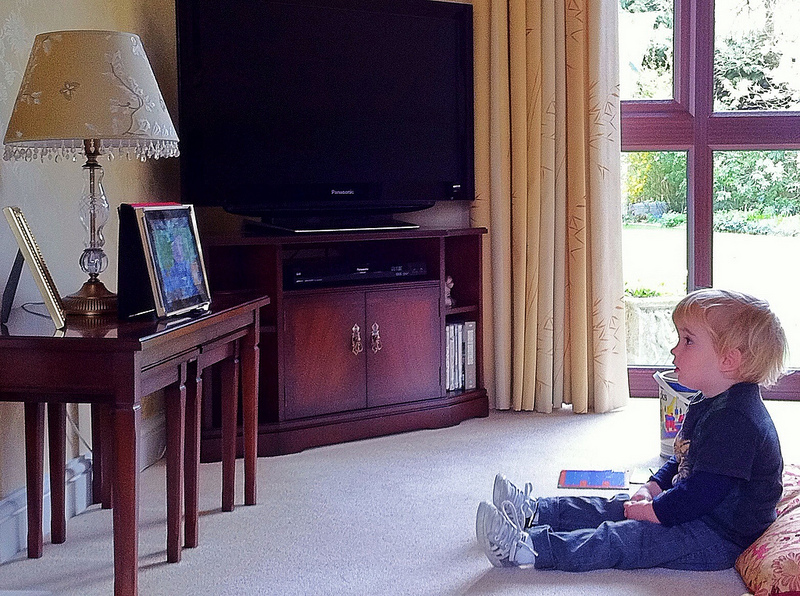
Watching ver iPad | Joe Saunders | CC-BY-2.0
From Big Screen to the Stream, and Back Again
There’s just something remarkable about going to the theater to watch a movie. You could be witnessing the next classic. Perhaps you’re on a fun date. For me, the aesthetics stand out above everything else: A giant glowing screen, the smell of butter, and the way your sneakers stick to gallons of soda coating the floor. Nowadays, more and more films are being streamed online through tablets and smartphones. Streaming is cheap, convenient, and a great alternative for those nights you want to keep the sweatpants on and stay home.
This led me to wonder why films can’t be produced in a similar format. Dailies are sent out to executives and producers on DVDs to be screened on either a large TV or even a small viewing theatre on the lot. But when a large chunk of a film’s revenue can come from digital downloads and then eventually Netflix distribution, why aren’t they being reviewed on a mobile device as well? The advance of device technology provides more and more optimal mobile viewing experiences, which allow the viewer to make a unique choice as to how they consume media. The choice to enjoy content on a mobile device is why we’ll be investigating the following benefits to mobilizing movie production.
3 Major Benefits
Rather than list every benefit of production mobilization, it’s best we break it down into 3 major ones. Reduced costs, viewer matching, and device improvements are all notable benefits that arise from mobilizing movie production.
1. Lower Cost
First and foremost, it’s going to be cheaper to digitally distribute dailies, rough cuts, and finals. Whether they’re going to studio execs or out to advertisers for review, it will be far cheaper (and greener) to do this digitally than spend the thousands of dollars per project on DVDs and shipping costs. You’d save enough to buy Matthew McConaughey at least one shirt.
2.Viewer Experience Matching
Box office numbers aren’t what they used to be. More and more of us aren’t able to make it to the movies and are choosing to catch up on things on our iPads while waiting on our flight that has been delayed three times already. By reviewing films on both the big and very small screens it ensures the quality of both versions. An optimal viewing experience, no matter the device, is key.
3.Better Devices
Phones and tablets have advanced so much that they’re now able to stream HD quality content as good as, if not better, than televisions and movie theaters. The quality that comes from distributing these materials digitally is on par with burning it to a disc and all viewers will be able to enjoy the same film on smaller and smaller screens. Devices are always improving the viewing experience even when a trip to the local IMAX isn’t an option.
Skepticism
Undoubtedly, there are some skeptics out there (cough David Lynch) who are against the viewing of films on mobile devices. The experience is certainly different from the theater. But when you look at the major benefits of mobilizing movie production and compare the review process to someone streaming a film on a tablet, the results are self-explanatory. Mobile viewing is a great experience that is here to stay and we hope the same adoption continues for the production process as well.

Comments are closed.